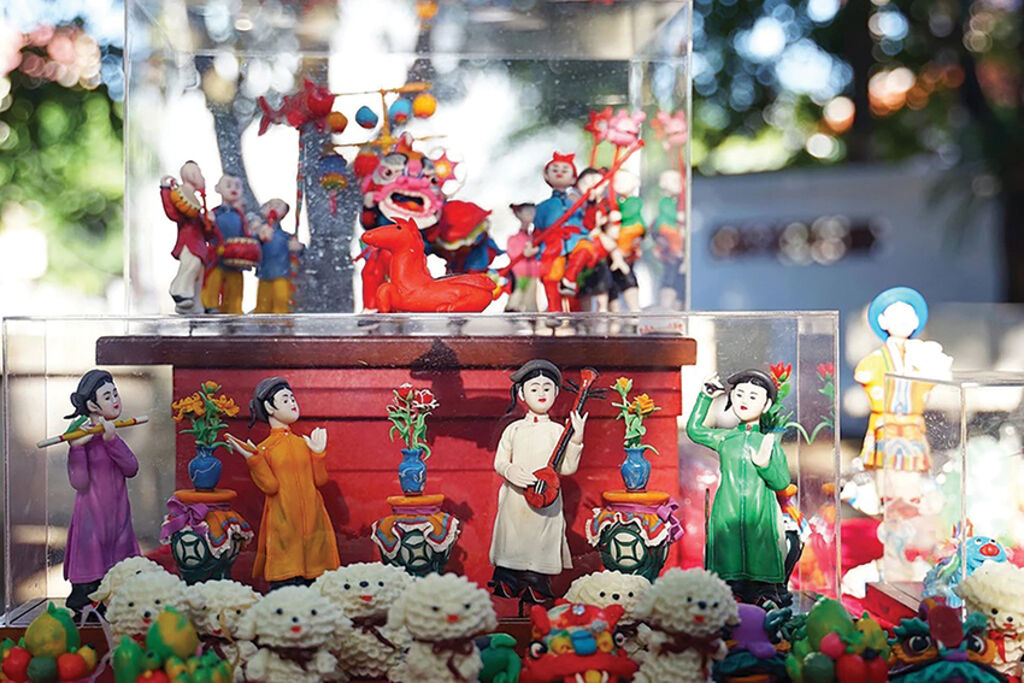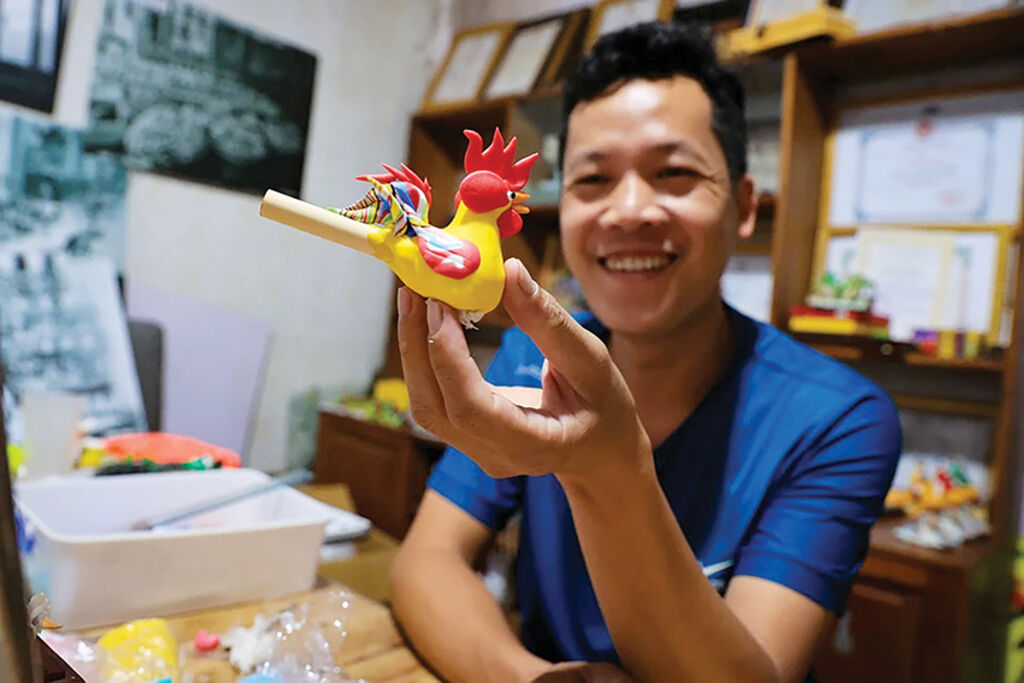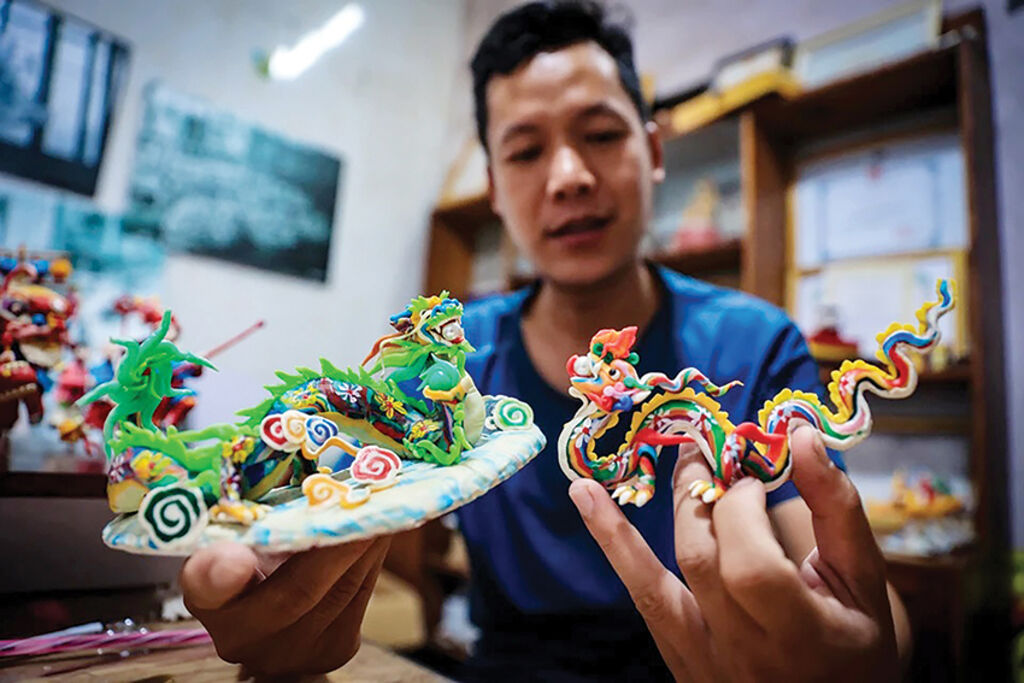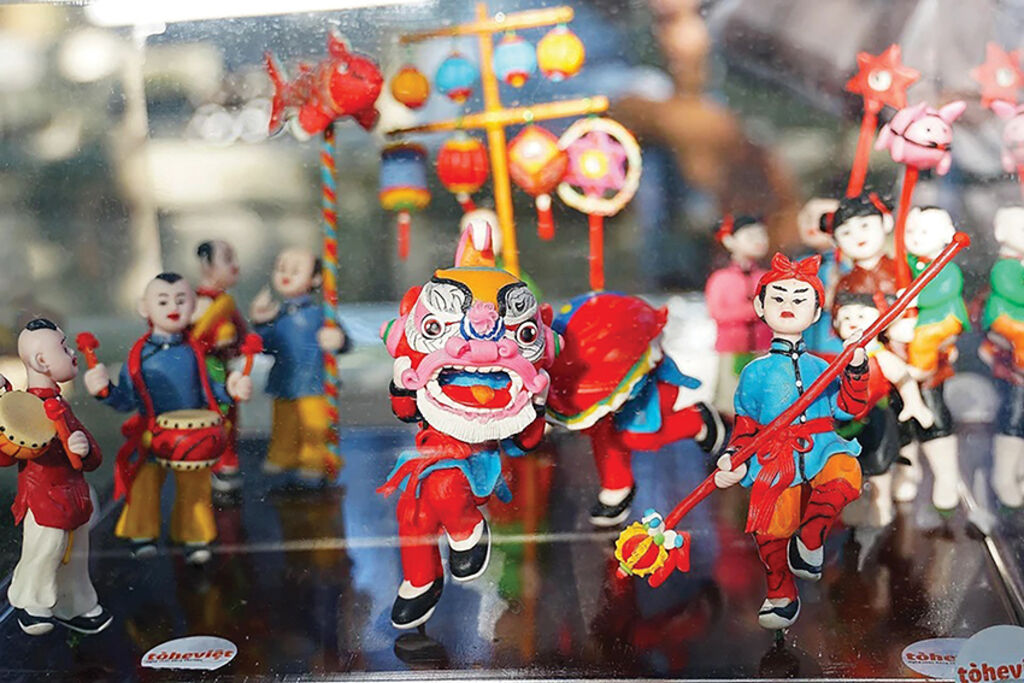 |
| A set of to he figurines depicting four young ladies in traditional costumes __Photo: Khanh Hoa/VNA |
It is said that this unique art of making to he, a traditional figurine toy, dates back to 300 years ago in Xuan La village of Phuong Duc commune in the suburban district of Phu Xuyen, Hanoi.
According to old villagers, at the beginning, these items were used as worship offerings. Small figurines, which were made of glutinous rice flour and little sugar, often took the shape of animals such as peacock, chicken, buffalo, cow, pig and fish, or the shape of a bunch of bananas, areca fruits or a tray of sticky rice. After worship rituals finished, the items were given to kids as simple edible toys. Sometimes, the figurines were attached to a bamboo flute which, once blown, produced a sound like to te. Since then, the toy was called to he.
As time went by, the art gained a reputation outside the village. With baskets full of to he, the villagers wandered far and wide to sell to he to people going to temples and pagodas and to children at markets and local festivals. Lunar New Year and the Mid-Autumn Festival are the two most important occasions of the year for to he makers as they are Vietnamese children’s favorite holidays.
 |
| A small bamboo flute, which, once blown, produces sound like to te, is attached to the figurine__Photo: Hoai Nam/Vietnam+ |
Nowadays, to he is crafted and sold year-round in front of school gates, at fairs in parks, or in other public places. Artisans from Xuan La village not only make to he with simple shapes of fruits but also knead other diverse shapes depicting national heroes, 12 zodiac animals, historical and cultural figures, natural landscapes, and even cartoon and movie characters.
 |
| Dragon to he figurines crafted by artisan Dang Van Hau after the dragon specimens of the Ly Dynasty and the Nguyen Dynasty__Photo: Hoai Nam/Vietnam+ |
To make to he toys, Xuan La villagers prepare colored rice flour dough. In the past, they used to grind glutinous rice and ordinary rice into flour and mix it with water. The mixture was then steamed and kneaded into dough. To color the dough, artisans used various garden vegetables: gac fruit or cape jasmine for red, turmeric or Japanese pagoda tree flowers for yellow, galangal leaves for blue, indigo for green, and false daisies for black. Other colors are created by mixing these natural dyes. After coloring, artisans kneaded the dough into edible figurines which were then steamed again before being sold. However, to he easily became moldy, dry and split. They could only be kept for a couple of days depending on artisans’ skills and weather conditions.
 |
| A set of to he inspired by the folk tale “Mice’s wedding”__Photo: Hoai Nam/Vietnam+ |
In the 1950s, the method of crafting to he has changed. First, Xuan La artisans mix glutinous and ordinary rice and soak the mixture in water. The mixture is then ground into powder. After that, artisans knead the powder thoroughly until it is no longer sticky, shape it into dough and boil it. Finally, they color the dough with natural dyes. With the color dough and simple tools - a small comb, a bunch of rounded small bamboo sticks to which figurines are attached, a box of bee wax and a box to display to he products, Xuan La villagers can make toys under customers’ orders in only a few minutes.
At present, Xuan La villagers use the mixture of industrial starch, process tapioca starch and rice flour, additives and food colors to make dough. With a pleasant aroma, the finished products are non-toxic, resistant to mold and cracks and last for several months.
 |
| Mid-autumn lantern procession, a work of artisan Dang Van Hau__Photo: Khanh Hoa/VNA |
Artisan Dang Van Hau, who has 20 years of experience of crafting to he, shared his techniques for shaping dough into various figurines. For a human figurine, one should create the legs first, followed by the body, and then the head. For a flower, the petals should be made first, then the stem, and finally the leaves. For an animal figurine, the process begins with the body, then the head, and concludes with the legs. He added that blending more red and yellow hues results in a brighter and more beautiful to he toy.- (VLLF)









